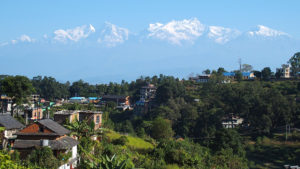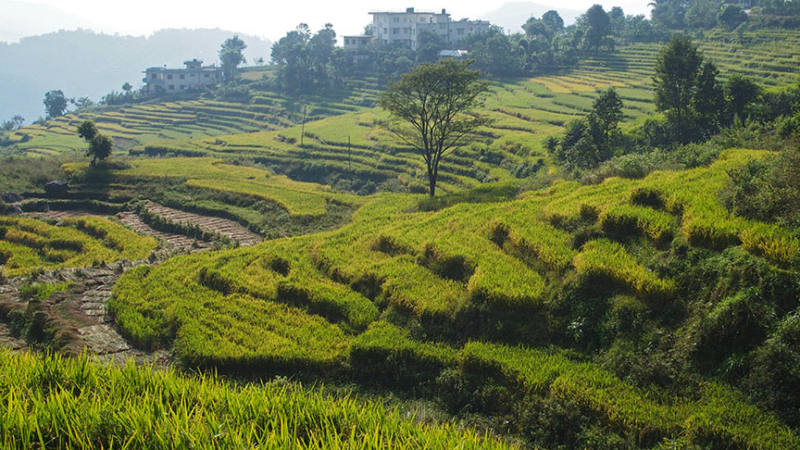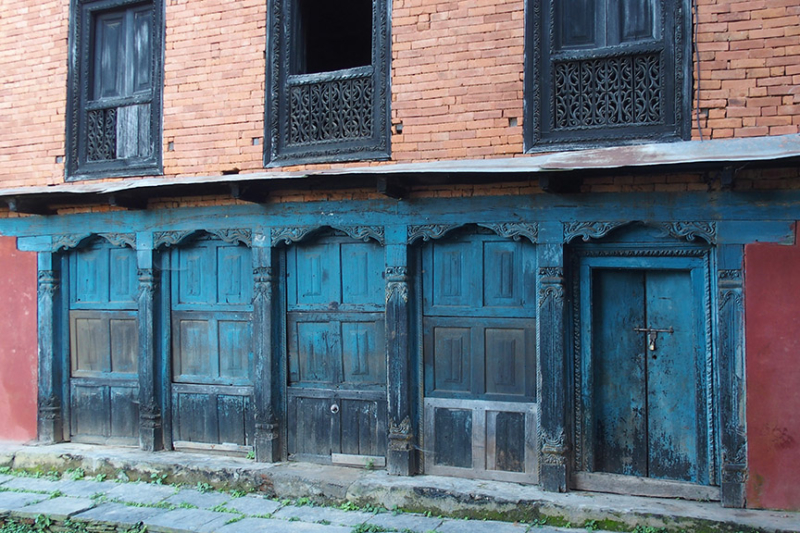Some of the most interesting and beautiful experiences that we have while traveling are long walks in the rural countryside. Getting away from the congestion, noise, and industrialization of the big cities is essential. Cities have a lot to offer as well but in some places, like Nepal, walking through a small village is like stepping back in time. As the world collectively evolves and pushes for modernization and development, older ways of life shrink and disappear. As with animals or plants going extinct, there is no time like the present to witness them because things are changing exponentially faster all the time and tomorrow much will be lost forever. In this regard, Nepal is a fascinating place because many communities have changed little for hundreds of years. Young people flock to the cities in pursuit of monetary dreams and the false flashing glamour of movies and western media but I’m not convinced that quality of life improves with urbanization or modern development. With the exception of a need for sanitary water and maybe some paved access roads, I think many people are happier and healthier in their traditional villages. It is said that Nepal is incredibly poor but that is only from the perspective of a modern, money-based world. It is rich in many ways that are more difficult to quantify.
Being in a small town or village makes a big difference but going a step further to wandering the outskirts of a village, into the countryside, can be magical. Sparse population, ancient agricultural techniques, wilderness, clean air, and self-sufficiency come together for a window into a vibrant and peaceful way of life that can look very appealing. I’m especially drawn to the buildings of these rural places. Hand made of stone, rough wood, and other natural materials, they are symbols of human ingenuity and the spirit of survival.
Unfortunately it would be illegal for a person to build such a structure in most parts of the United States (building codes, land use regulations, permits, inspections, licensed contracting) which raises a question in my mind. How much freedom do we really have? For a person to use their mind, bare hands, physical energy, and community resources to satisfy one of the most fundamental needs in life – a shelter – the foundation of livelihood itself, sounds like an empowering form of freedom to me that somehow we Americans do not have. It should not be contingent upon participation in a system of overgrown consumerism for a person to have that freedom. If a person needs to have an expensive college degree and find that special niche in the economy which is considered highly valuable in order to own a home and enough land to grow some food then there is something wrong with that system. I know that I’m lucky in many ways to have grown up in the US, and these communities certainly have their problems (caste discrimination?), but in other ways I envy people who live in places like this because they can build and sustain a good life without needing a huge amount of money. Seeing how things are done elsewhere can certainly have the effect of highlighting flaws at home.
We stopped and spent a few days in a couple of towns amid the lush green rolling hills of the Kathmandu Valley. The first was Gorkha, which is a lovely place that is well-known locally for being the birthplace of the modern country of Nepal. You wouldn’t think this town was ever a glorious capitol, however, and it has the feel of an ordinary Nepali town, perched near the top of a hillside covered with gorgeous rice terraces.

Seeing those misty hills on the bus ride to town made me want to get out and see the rice fields up close. Fern and I went for a couple of long walks to check it out. Gorkha itself is relatively modernized and even the rural areas are dotted with newer concrete earthquake-proof buildings. Can’t blame them since this is near the epicenter of the massive 2015 earthquake. The surrounding area was charming and I fantasized about taking a motorbike through the nearby valleys and villages but since it isn’t a major tourist destination I didn’t see anywhere to rent a bike. Oh well. We encountered a tarantula on the road, among many other animals, which was a first for both Fern and me. It’s not just the people that make these Nepali towns special.
Our next stop was Bandipur, which is filled with beautiful old Newari architecture. The Newars are a dominant ethnic group throughout central Nepal and, due in part to their relative wealth and trading practices, their architecture (and their food) is distinctive and impressive. Bandipur’s cobblestone lanes, red brick buildings, and well worn but intricately carved wooden doorways, window coverings, and balconies make for some very nice strolls through town. A handful of hotels and tiny restaurants cater to the growing number of tourists and we had no trouble finding some great traditional Newari food.

Once again we decided to spend a day walking away from town. Bandipur is situated in a stunningly scenic location with unobstructed views of the Himalayas to the north and rolling foothills covered with forest, rice terraces, and villages in every other direction. Our day hike took us to Ramkot, which is a very small village filled with incredible old stone houses, animals everywhere, and perfect little vegetable gardens. It was up on a high ridge, and below in the valley sculpted rice terraces undulated away into the forested hills.
Many people come to Nepal specifically to go trekking in the Himalayas. I have no doubt that the scenery is amazing but Fern and I have found that there is so much to see just by walking down a dirt road away from town. Nepali culture is unique and varied, the people we encounter along the way are for the most part warm and friendly, and there is an almost overwhelming natural beauty all around.
jim@snorkelbandits.com



